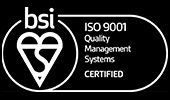Navigating the Modern IT Maze: A Strategic Approach to Complexity Management
IT leaders face an unprecedented challenge: managing increasingly complex technology environments whilst maintaining operational efficiency and driving innovation. The enterprise technology stack has transformed dramatically, creating both tremendous opportunities and significant operational headaches.

The Complexity Conundrum
Modern organisations find themselves managing a bewildering array of technologies, platforms, and services. What was once a relatively straightforward IT environment has evolved into a complex ecosystem of cloud services, hybrid infrastructures, mobile platforms, and an ever-expanding suite of business applications.
This complexity isn't accidental – it's the natural result of digital transformation initiatives, business growth, technological advancement, and the pursuit of competitive advantage. However, left unchecked, this complexity can become a significant barrier to progress, stifling innovation and creating operational inefficiencies.
Understanding the Root Causes
The explosion of available technology solutions has fundamentally changed how organisations build their IT landscapes. Modern businesses often find themselves managing multiple tools performing similar functions across different departments, creating unnecessary overlap and inefficiency. This proliferation is compounded when companies grow through acquisitions, inheriting disparate systems that weren't designed to work together.
Legacy systems present another significant challenge. These older platforms remain critical to operations but struggle to integrate with modern solutions, creating ongoing maintenance overhead and operational bottlenecks. Meanwhile, the rapid pace of technological innovation means organisations are constantly evaluating new solutions whilst maintaining existing systems, creating layers of complexity that compound over time.
Perhaps most problematically, departmental independence in technology adoption has created fragmented landscapes. When business units independently select and implement solutions without central oversight, the result is a patchwork of systems that's difficult to manage, secure, and optimise.
The Hidden Costs of Complexity
IT complexity extends far beyond technical challenges, creating tangible business consequences that impact an organisation's competitive position. Complex environments inherently reduce organisational agility, as modifications take significantly longer to implement, limiting the ability to respond quickly to market changes or customer demands. This sluggishness becomes particularly problematic in fast-moving industries where responsiveness is a competitive advantage.
The security implications are equally concerning. More systems inevitably mean more potential attack vectors and vulnerabilities to manage, stretching security teams thin and increasing the likelihood of successful breaches. Operationally, complex environments demand significantly more resources to maintain, support, and secure, driving up costs whilst delivering diminishing returns on technology investments.
Perhaps most damaging to long-term success, complexity creates innovation bottlenecks. Teams find themselves spending the majority of their time managing existing systems rather than focusing on strategic initiatives that could drive business growth. This maintenance burden often leads to skills gaps, as organisations struggle to find professionals with the diverse expertise needed to manage increasingly complex technology stacks.
Strategic Approaches to Complexity Reduction
1. Assessment and Inventory
The foundation of effective complexity management lies in comprehensive understanding. Begin with a thorough audit of your technology landscape, cataloguing all systems, applications, and platforms currently in use whilst mapping integration points and dependencies between systems. This process should identify redundant or overlapping functionality, systems approaching end-of-life, and any security vulnerabilities or compliance gaps that require immediate attention.
2. Standardisation and Consolidation
Armed with clear visibility into your current state, focus your efforts on strategic reduction. Platform standardisation offers significant opportunities to serve multiple functions with fewer solutions, whilst vendor consolidation can dramatically simplify procurement, support, and integration challenges. Equally important is process harmonisation across departments, which reduces the variety of system requirements and creates operational efficiencies.
3. Intelligent Automation
Modern automation capabilities can substantially reduce the operational burden of complex environments. Identify repetitive manual processes that consume valuable staff time and implement automated solutions where possible. Intelligent monitoring systems that predict and prevent issues before they impact operations can dramatically reduce fire-fighting activities, whilst self-service capabilities enable users to perform common tasks without requiring IT intervention.
4. Cloud Strategy and Architecture
Contemporary cloud platforms present unique opportunities to reduce complexity through managed services that eliminate much of the operational burden of infrastructure management. An API-first architectural approach ensures that integration considerations are built into systems from the ground up, whilst microservices architectures break large, unwieldy systems into smaller, more manageable components that can be developed, deployed, and maintained independently.
Cultural and Organisational Considerations
Successful complexity reduction extends far beyond technology solutions, requiring fundamental shifts in organisational culture and approach. Executive sponsorship remains crucial, as leadership must understand the business case for complexity reduction and provide the necessary resources and sustained support for what is often a multi-year initiative.
Breaking down traditional silos between IT and business units ensures that technology decisions align closely with business objectives rather than being driven purely by technical considerations. This collaborative approach requires careful change management, as reducing complexity often means changing established processes and ways of working that staff may have relied upon for years.
Investment in skills development is equally critical. Modern technology environments demand different capabilities than traditional IT operations, and organisations must ensure their teams have the knowledge and expertise needed to manage contemporary platforms effectively whilst embracing new methodologies and approaches.
Building for the Future
Preventing future complexity accumulation requires proactive governance and strategic thinking. Establish robust processes for evaluating and approving new technology solutions, ensuring that each addition serves a clear business purpose and integrates well with existing systems. Technical architecture standards provide guardrails that new solutions must meet, preventing the introduction of incompatible or redundant technologies.
Regular technology landscape reviews help identify emerging complexity issues before they become problematic, whilst strategic planning ensures that technology decisions support long-term business objectives rather than addressing only immediate needs. This forward-thinking approach transforms IT from a reactive function into a strategic enabler of business growth.
The Road Ahead
Reducing IT complexity is rarely a quick fix – it's an ongoing journey that requires sustained effort and commitment. However, organisations that successfully manage complexity position themselves for greater agility, innovation, and competitive advantage.
The key is to approach complexity reduction strategically, with clear objectives, realistic timelines, and strong leadership support. By taking a systematic approach to assessment, standardisation, and governance, organisations can create more manageable, secure, and efficient technology environments that support rather than hinder business objectives.
Remember, the goal isn't to eliminate all complexity – some complexity is inevitable and even beneficial. The objective is to ensure that complexity serves a clear business purpose and that you have the tools, processes, and skills necessary to manage it effectively.
---
At Altiatech, we help organisations navigate complex technology landscapes and develop strategies for sustainable IT management. Our team of experts can assist with technology assessments, architecture planning, and implementation of governance frameworks that support your business objectives whilst managing complexity.













